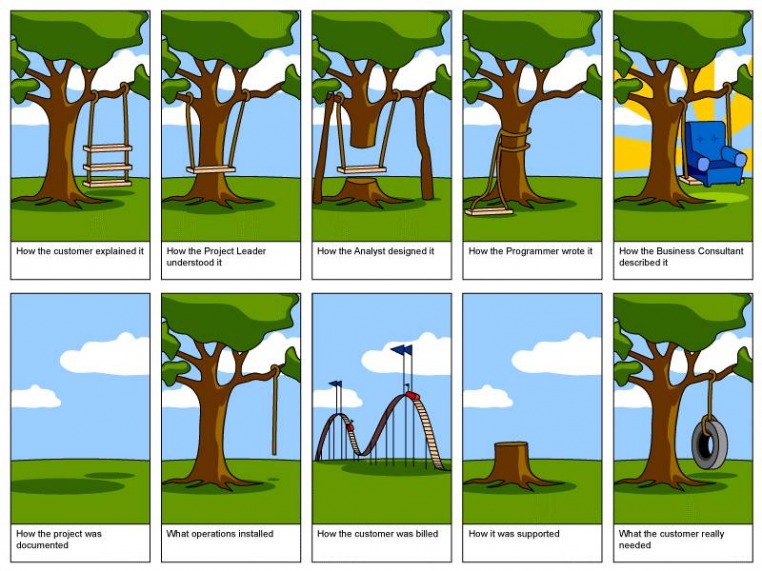What happens when there is misunderstanding and ambiguity in projects? You could potentially end up with very different project results as is illustrated in the cartoon above. It is not uncommon for clients, project managers and other stakeholders to have different perspectives on project requirements. This occurs frequently, and if not dealt with immediately, project haziness can quickly have a negative impact on a project. Nobody heavily invested in a project wants to see this, especially the client. To reduce the risk of ambiguity, gathering requirements must start early in the development of the project and occur often throughout the life of it. Clarity is the name of the game. Unfortunately this is easier said than done, and project managers will find that gathering requirements is one of the first big challenges they will face with their clients. Nonetheless, the importance of having a good process for collecting project requirements cannot be overstated. Project requirements are used to define scope of work and are the inputs for work break down structures. They are what deliverables, activities, and schedules originate from. For these reasons, project managers must have project clarity prior to planning, designing, building or executing any part of the project.
Clients are often good at expressing their wants but not their needs. In the swing project illustration, for example, the client only really needed a tire swing but explained as though he/she wanted something else. Project managers must always look for needs. A successful project starts with the knowledge of what the client really needs and ends when those needs are satisfied. If a project manager is not clear on what the client needs out of the project, don't expect him or her to know what it takes to complete it. More often than not, project managers have to prepare the client to have the attitude, commitment, and willingness to be involved because not all clients will be open and proactive in this process.
Here are a few tips for gathering requirements;
Clients are often good at expressing their wants but not their needs. In the swing project illustration, for example, the client only really needed a tire swing but explained as though he/she wanted something else. Project managers must always look for needs. A successful project starts with the knowledge of what the client really needs and ends when those needs are satisfied. If a project manager is not clear on what the client needs out of the project, don't expect him or her to know what it takes to complete it. More often than not, project managers have to prepare the client to have the attitude, commitment, and willingness to be involved because not all clients will be open and proactive in this process.
Here are a few tips for gathering requirements;
- Choose the right person for the job, someone with exceptional communication skills and technical background.
- Meet with the customer frequently- the sooner the better
- Ask plenty of questions
- Use interviews, focus groups, workshops.
- Use these group creativity techniques: brainstorming, nominal group technique, the Delphi technique, idea/mind mapping, affinity diagram.
- Distribute questionnaires and surveys.
- Document and confirm
- Revisit the requirements often


 RSS Feed
RSS Feed
